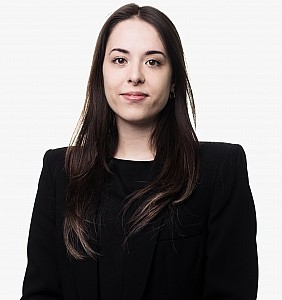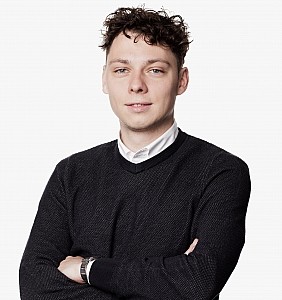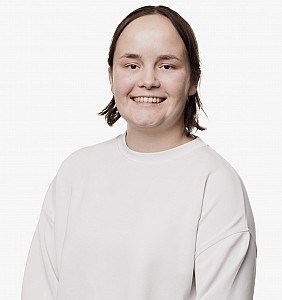SPC Blog - Part 5: Defining the First Authorization: a Case Law Journey through Article 3(d)

Introduction
The Supplementary Protection Certificate (SPC) Regulation is a vital mechanism within the European Union designed to compensate patent holders for the lengthy time required to bring pharmaceutical and plant protection products to market. Specifically, it addresses the delay caused by the regulatory approval processes, which can significantly shorten the effective market exclusivity enjoyed under patent protection. By extending patent protection for up to five years, with an additional six-month extension for pediatric medicines, the SPC Regulation helps innovators recoup some of the time lost during the product’s development phase.
Introduced as part of the EU's efforts to foster innovation, especially in the life sciences and pharma sector, the SPC regime has become a cornerstone for pharmaceutical and agrochemical companies looking to extend their market monopoly on groundbreaking products. However, securing an SPC is not automatic; the process is governed by criteria laid out in the respective Regulations (Regulation (EC) N° 469/2009 for pharmaceutical inventions and Regulation (EC) N° 1610/96 for plant protection) .
At the heart of the SPC Regulation lies Article 3, which establishes the core conditions for obtaining a supplementary protection certificate. This article is the subject of extensive judicial interpretation by the Court of Justice of the European Union (CJEU), as it determines the eligibility of products for extended protection. Article 3 encompasses four key requirements that govern whether
- a product is protected by a basic patent, (Article 3(a))
- has a valid marketing authorization, (Article 3b)
- has not already been the subject of an SPC, (Article 3c) and
- that the marketing authorization in question is the first authorization to place the product on the market. (Article 3(d))
In this series of articles, we will explore the sub-articles of Article 3 (3(a), 3(b), 3(c), and 3(d)), and examine how various CJEU decisions have shaped the interpretation of these provisions.

Article 3d: First Authorization
Article 3(d) states that the authorization referred to in (b) is the first authorization to place the product on the market as a plant protection product or medicinal product. This clause plays a key role in preventing multiple extensions of patent protection for the same product based on subsequent or secondary marketing authorizations, which could lead to excessive monopolies and hinder competition.
Relevant case law
Article 3(d) of the SPC Regulation has been shaped by key rulings from the CJEU. In the case Ratiopharm GmbH v. Aktiebolaget Hässle (C-127/00; 2003), the CJEU examined the interpretation of Regulation N°1768/92 concerning the grant of an SPC for omeprazol, an active pharmaceutical ingredient. The dispute centered on whether the first marketing authorization in the EU should be considered the decisive factor for SPC eligibility, or whether other authorizations, such as national price-law authorizations, could also play a role. The case highlighted the importance of determining the correct “first authorization” for placing a product on the market in the EU, reaffirming that only the first medicinal marketing authorization in the EU qualifies, excluding subsequent national authorizations related to price control or reimbursement. This decision emphasized the uniform application of the SPC Regulation across Member States, avoiding divergent national practices that could undermine the harmonization intended by the SPC framework.
In case C-443/12 Activas Group PTC EHF v. Sanofi (2013), the CJEU examined the interpretation of Article 3(d) of Regulation (EC) N° 469/2009, concerning the conditions for obtaining an SPC for medicinal products. The issue was whether Sanofi, having already obtained an SPC for the active ingredient irbesartan, could acquire a second SPC for a combination of irbesartan and hydrochlorothiazide. The Court ruled that Article 3(d) doe not permit the issuance of a second SPC for a combination of active ingredients when one of those ingredients is already protected by an earlier SPC based on the same patent. This ruling clarified that the SPC system is not intended to allow multiple certificates for the same basic patent, even for different combinations of active substances, to prevent unjustified extensions of protection for a single patent.
In case C-673/18 Santen SAS v. Directeur général de l’Institut national de la propriété industrielle (2020), the CJEU addressed the interpretation of Article 3(d) of Regulation N° 469/2009. The case focused on whether an SPC could be granted for a new therapeutic application of ciclosporine, despite the fact that a prior marketing authorization had been issued for another therapeutic use of the same active ingredient. The CJEU ruled that a marketing authorization for a new therapeutic application does not qualify as the first market authorization under Article 3(d) if there was an earlier market authorization for a different therapeutic use of the same product. This decision clarified that the scope of the first market authorization under Article 3(d) is linked to the product, not its therapeutic use, preventing multiple SPCs for different applications of the same active substance.
The latter case, C-673/18 (Santen) overruled an earlier CJEU decision, C-130/11 (Neurim Pharmaceuticals; 2012), redefining the scope of Article 3(d) of the SPC Regulation. In Neurim, the Court had interpreted Article 3(d) broadly, allowing an SPC to be granted based on a new therapeutic use of an active ingredient that had previously been authorized for a different use, such as veterinary treatment. However, in Santen, the Court took a more restrictive approach, ruling that the concept of the “first market authorization” under Article 3(d) refers to the first authorization of the product itself, regardless of its specific use. This stricter interpretation effectively nullified the more flexible stance in Neurim, limiting SPCs to the first authorization of a product for any use, whether for veterinary or human applications, and preventing new SPCs for subsequent therapeutic applications of the same active ingredient.
Conclusion
In conclusion, the Supplementary Protection Certificate (SPC) Regulation plays a crucial role in extending patent protection for pharmaceutical and plant protection products within the European Union, compensating for the time lost during regulatory approval processes. Article 3, particularly Article 3(d), is central to determining whether a product qualifies for an SPC, ensuring that only the first marketing authorization within the EU is considered for this extended protection.
The interpretation of Article 3(d) has been shaped by several key cases. In Ratiopharm GmbH v. Aktiebolaget Hässle (C-127/00), the CJEU clarified that only the first marketing authorization within the EU qualifies, excluding subsequent national authorizations related to pricing. In Activas Group PTC EHF v. Sanofi (C-443/12), the Court ruled that a second SPC cannot be granted for a combination of active ingredients if one ingredient is already covered by a previous SPC. Finally, in Santen SAS v. Directeur général de l’Institut national de la propriété industrielle (C-673/18), the Court overturned its earlier decision in Neurim Pharmaceuticals (C-130/11), ruling that an SPC cannot be granted for new therapeutic uses of a product that has already received a prior marketing authorization. These rulings collectively establish a stricter interpretation of Article 3(d), limiting SPCs to the first authorization of a product itself and reinforcing uniform application across the EU.
Do you have a question?
We would be happy to assist you.
Make an appointment with one of our experts.
Rest assured, you're not alone.
Feel free to browse through the FAQ and don't hesitate to
contact us if you still have any doubts.




